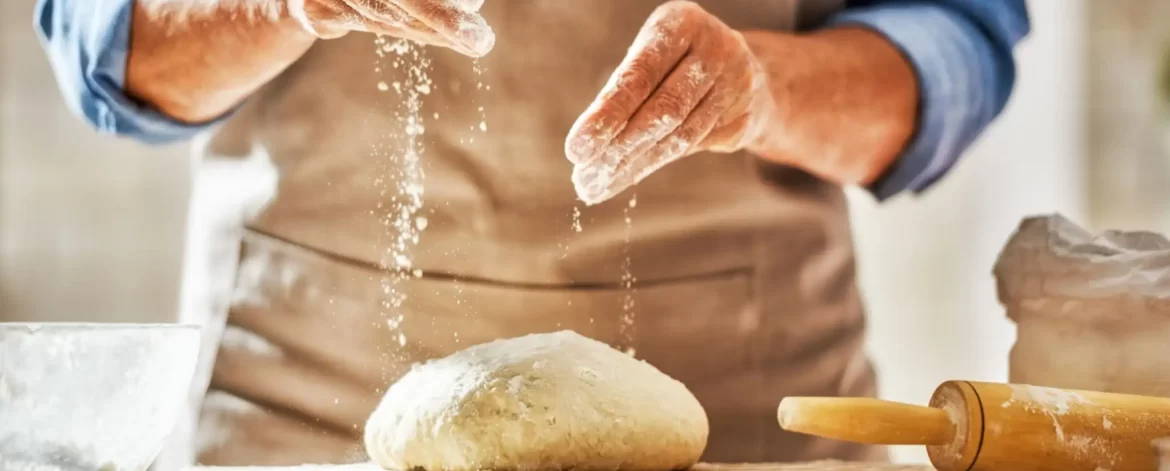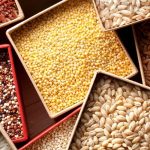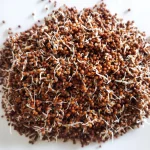What role does Flour play?
Before Mastering Gluten Free Baking And Cooking we kneed to understand – The main function of flour in baking is to build the structure. When the proteins found in wheat flour are hydrated, they interact with each other forming what is known as gluten. As dough or batter containing wheat flour is worked, an elastic network is developed. This gluten network stretches to contain the leavening gasses in the baked good. Wheat flour and the production of gluten are essential for the structure of traditional baked goods.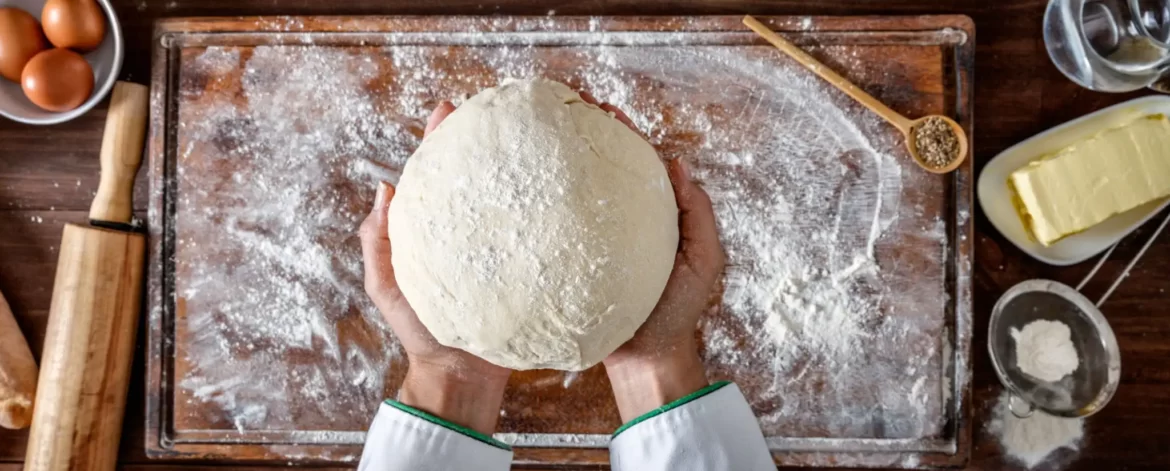
What to Expect from Gluten-Free Baking?
Understanding how and why gluten-free recipes work differently than conventional ones will help you achieve the texture and flavour you crave. Gluten is an elastic protein found in certain grains, like wheat, barley, and rye, that helps provide structure and a satisfying chewiness. Gluten’s elasticity allows batters and doughs to trap air released by leavening agents, which is how they’re able to rise.
Cooking without gluten can sometimes be as simple as omitting certain ingredients, but gluten-free baking requires a bit of a different approach. All-purpose wheat flour plays such a large role in traditional baking that, when you remove it, you not only need to figure out what to replace it with, but you also need to understand how those new ingredients will behave and affect your recipe. Once you get a hang of the for gluten-free baking, you’ll be on your way to recreating all your favourite treats with confidence.
How to Bake Gluten-Free?
The main function of flour in baking is to build structure. When the proteins found in wheat flour are hydrated, they interact with each other forming what is known as gluten. As dough or batter containing wheat flour is worked, an elastic network is developed. This gluten network stretches to contain the leavening gasses in the baked good. Wheat flour and the production of gluten are essential for the structure of traditional baked goods.
TIPS ON GLUTEN-FREE BAKING AND COOKING
Gluten-free flours absorb more liquid
You might notice a different ratio of ingredients in gluten-free recipes. Gluten-free flours often contain fine starches, so they absorb more liquid than conventional flour. To address this, gluten-free recipes usually call for more liquid and produce looser batters.
Gluten-free batters can tolerate overmixing.
In traditional baked goods recipes, you’ll often read to be careful not to over-mix the batter. Overmixing develops the gluten and results in an unpleasant toughness. With gluten-free recipes, of course there’s no gluten to consider, so this is a nonissue. In fact, gluten-free baked goods actually benefit from a longer mix, by providing more structure and allowing a better rise.
Gluten-free batters need to rest.
Even the best combinations of gluten-free alternative grains and flour blends can yield a gritty texture. This is remediated by resting your batter for about 30 minutes so the flour has time to hydrate and soften.
Resting is especially important for gluten-free baked goods that have a shorter bake time, like pancakes and cookies.
Less kneading required.
Traditional breads and baked goods require kneading to develop the gluten. Since gluten-free recipes don’t have any gluten (surprise!), they don’t require much of kneading. Even when you use sprouted gluten free grain flours, less kneading will do all the wonders.
Measuring is a key
To get the best results, it’s good to weigh your flour on a kitchen scale instead of simply measuring it out in a measuring cup. One cup of all-purpose wheat flour weighs about 140 grams. So, when you substitute in your gluten-free flour, keep the cup-for-cup gram weight the same. But when you substitute recipe with green banana flour, less is more, so use only 100 gms.
Stick to recipes
Remember that gluten-free baking doesn’t follow the same visual cues as traditional baking. You might be tempted to improvise on a recipe and use your tried-and-true baking know-how but, until you’re comfortable with the particulars of gluten-free baking, use recipes designed for gluten-free flour and follow them as outlined.
If the recipe includes a specific flour, use that one for best results. If you’ve purchased a gluten-free blend but aren’t sure where to start, the back of the package and the brand’s website are great places to look. Those recipes are developed with that specific brand in mind and have been tested for success.
Storage of gluten free flours
It is advised to store gluten free flours in the refrigerator, to maintain its freshness.
ESSENTIAL GLUTEN-FREE BAKING INGREDIENTS
The staple in a traditional baker’s arsenal is all-purpose wheat flour. To replace this one grain, we need multiple gluten-free ingredients to try and match its composition: some high protein, some high in starch, and others to act as a binder.
These days, you can find healthy flour and flour blends of ingredients that are meant to work as an “all purpose” substitute for traditional all-purpose flour. Rice flour, potato starch, and tapioca starch are among some of the most commonly-used ingredients.
In addition to an all-purpose blend, there may be times you want to make a muffin, cake, or even a pizza for dinner. When all-purpose flour won’t cut it, stock your pantry with additional gluten free flours, like banana flour, millet flour, nut flours, bean flours, which are more nutritious. You’ll also need binders, like xanthan gum or psyllium husk, to adjust the structure in what you’re baking especially bread. 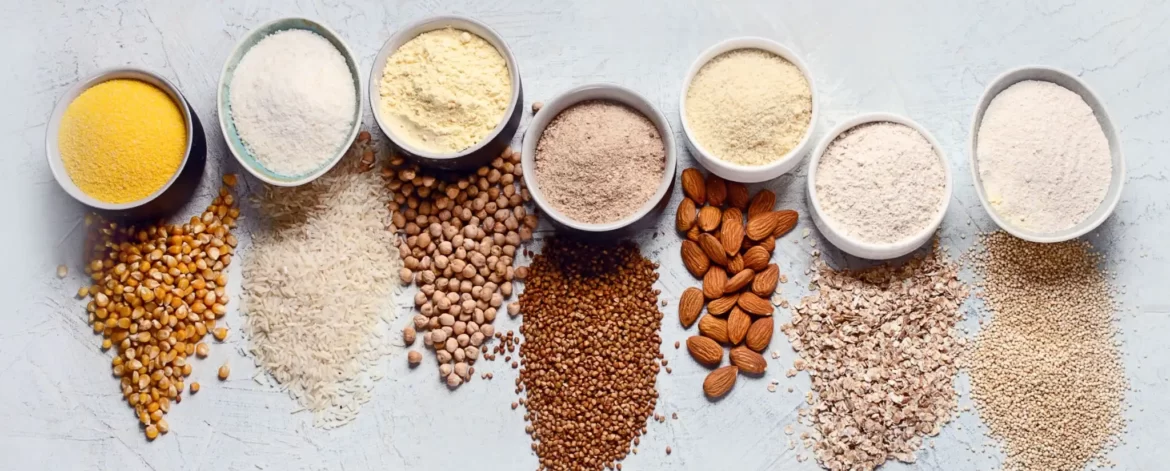
Gluten Free Starches for Baking and Cooking
To your surprise, there is an addition to the list of common starches used in industry – Green Banana flour can be used as a binding agent in baking as it is high in resistant starch. It is healthier than the other common starches. 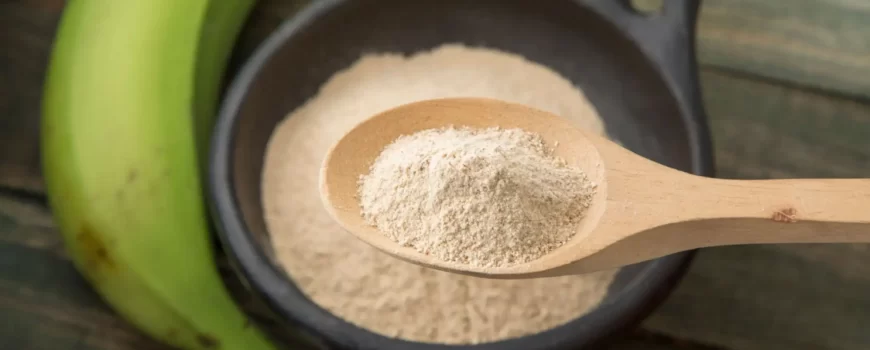
GLUTEN-FREE FLOUR GUIDE
Whether you follow a gluten-free, paleo, or keto diet, it’s hard to get away from the topic of gluten-free flours. There are variety of products available in the market like banana flour, millets flour, Sprouts flour, Amaranth flour, Almond flour etc.
Amaranth Flour: The tiny whole grains that make a surprising breakfast cereal can also be ground into a fine flour. Amaranth is rich in protein and has a grassy, earthy taste. Due its grassy flavour, use it in savoury dishes like pizza dough.
Chickpea Flour: Also known as garbanzo bean or ceca flour — is used for flatbread in the south of France. Lentil flour shows up in Indian cuisine. Fava beans become flour and show up in some commercial gluten-free baking mixes. They are all rich in protein and fibre.
Finger Millet/Buckwheat Millet Flour: Mild and ever-so-slightly sweet, millet is an adaptable grain that is rich in magnesium, iron & calcium. It soaks up the tastes of the foods surrounding it, making it a very neutral gluten-free flour to use. Millet flour lends a crumbly texture to breads and muffins and is the least allergenic of all the grains. Best for Breads, muffins, cookies, cakes and crusts.
Sorghum Flour: It is closest in texture and taste to traditional wheat flour or any of the gluten-free flours. In a few cases, it works as a direct substitution for wheat flour, such as in pancakes. It’s also high in antioxidants, used for Muffins, breads, pancakes, crepes, cookies.
Green Banana Flour: It is high fibre & rich in potassium. It can be used as a replacement in bread, gnocchi, pasta, etc. instead of wheat or refined flour. Use as standalone gluten-free flour or in baking mixes and can be used as a thickener for gravies and soups.
Sprouted Grain Flours: Science says sprouted flour improves baking performance on multiple counts. Breads made from sprouted chickpea flour have a better texture and a better loaf volume than bread made from unsprouted chickpea flour. The flour tastes sweet and mild, with none of the bitterness of traditional whole grain. It’s the perfect choice for our healthy bakes.
Lastly, if you need to account for a strict gluten-free diet, it’s important to read the labels on everything you will be baking or cooking with. Because of manufacturing processes, wheat can sometimes sneak into ingredients that would otherwise be naturally gluten-free.
These are some helpful tips and tricks that make things easier and nothing will stand in your way when you are cooking and baking gluten-free treats.


